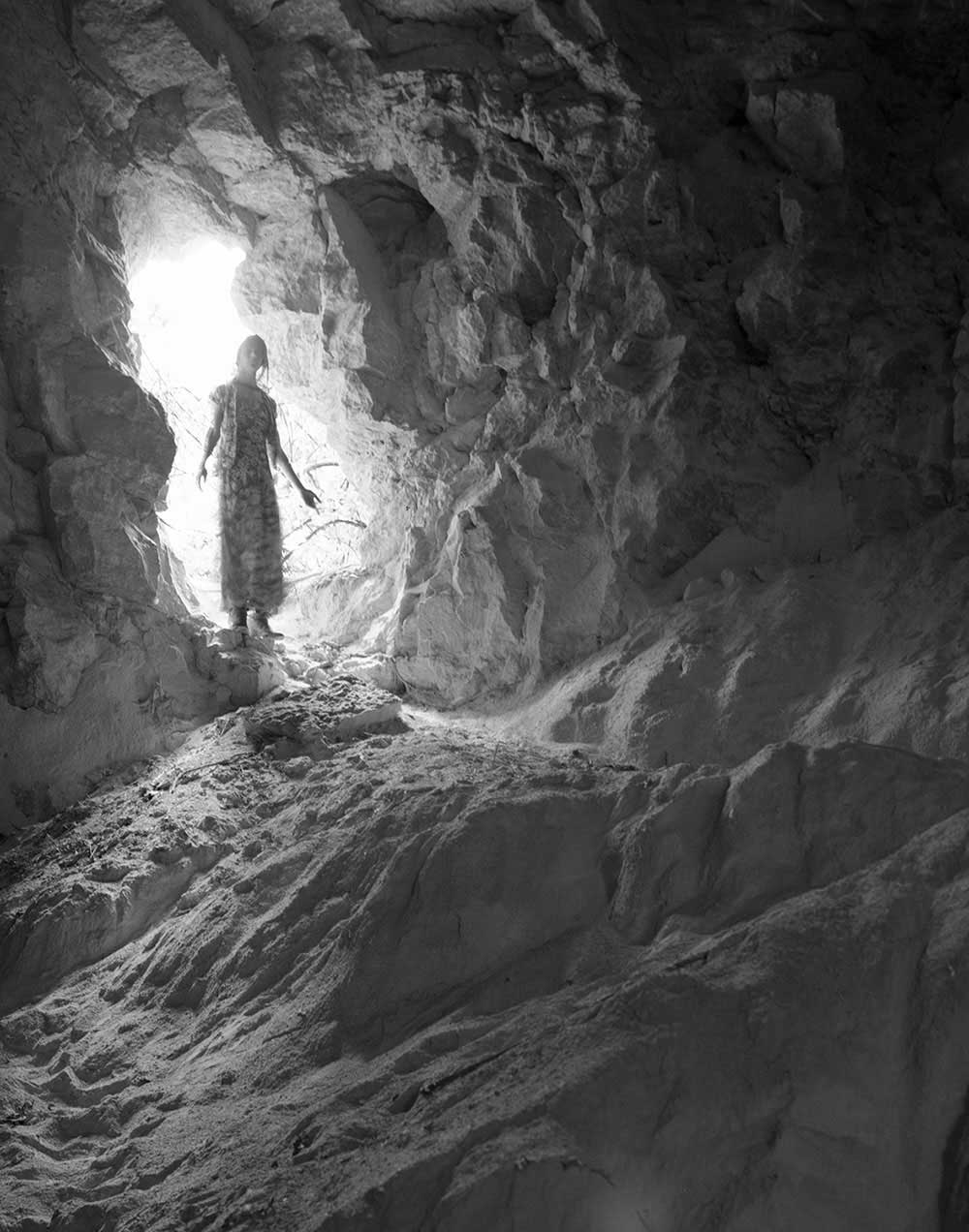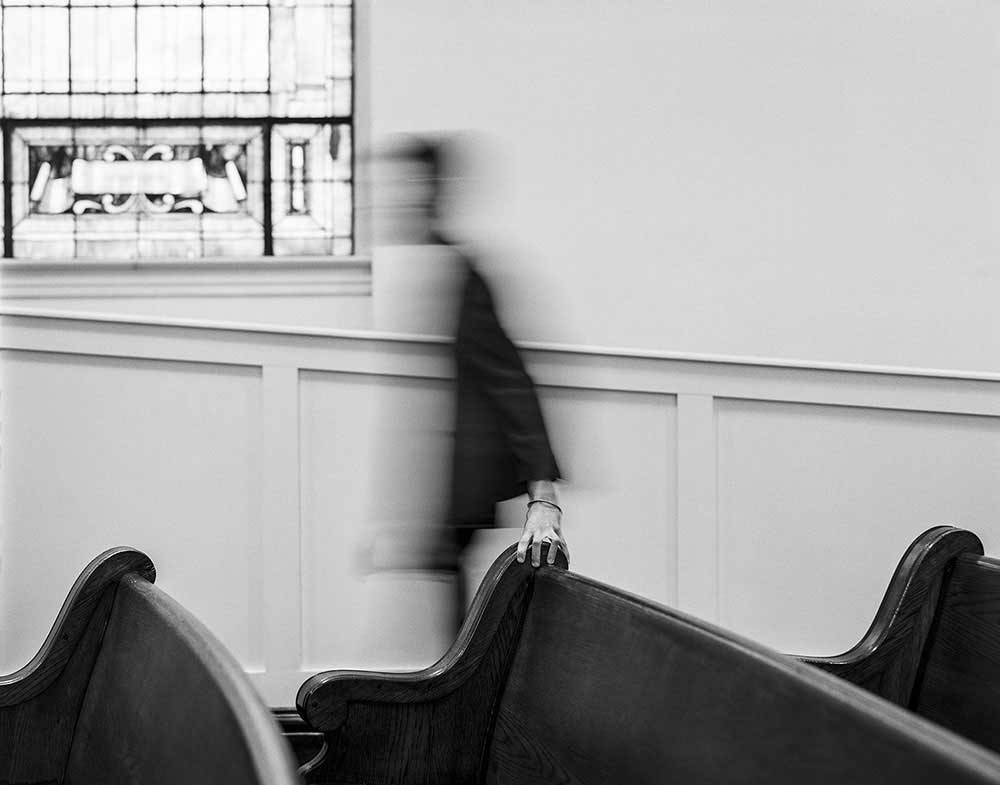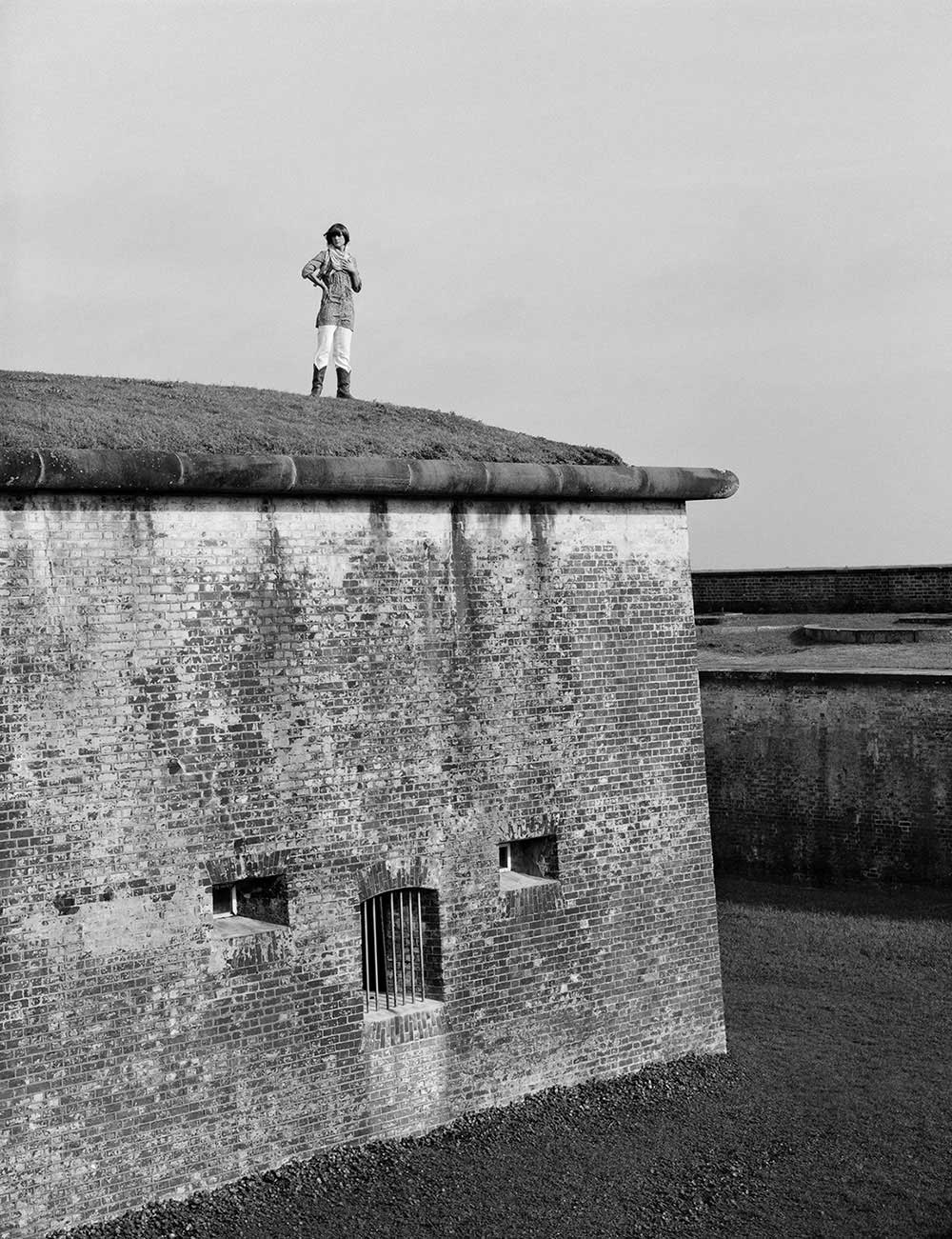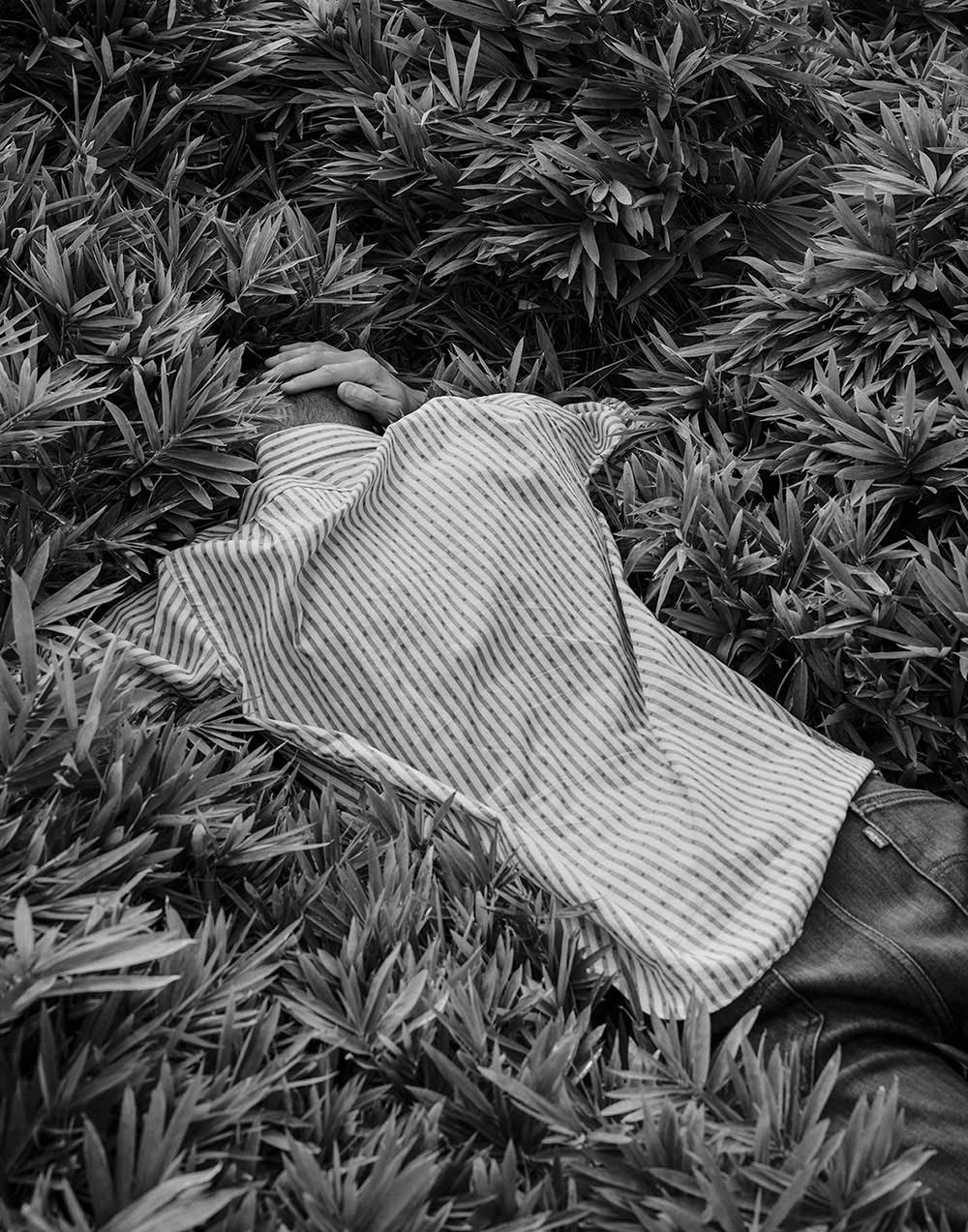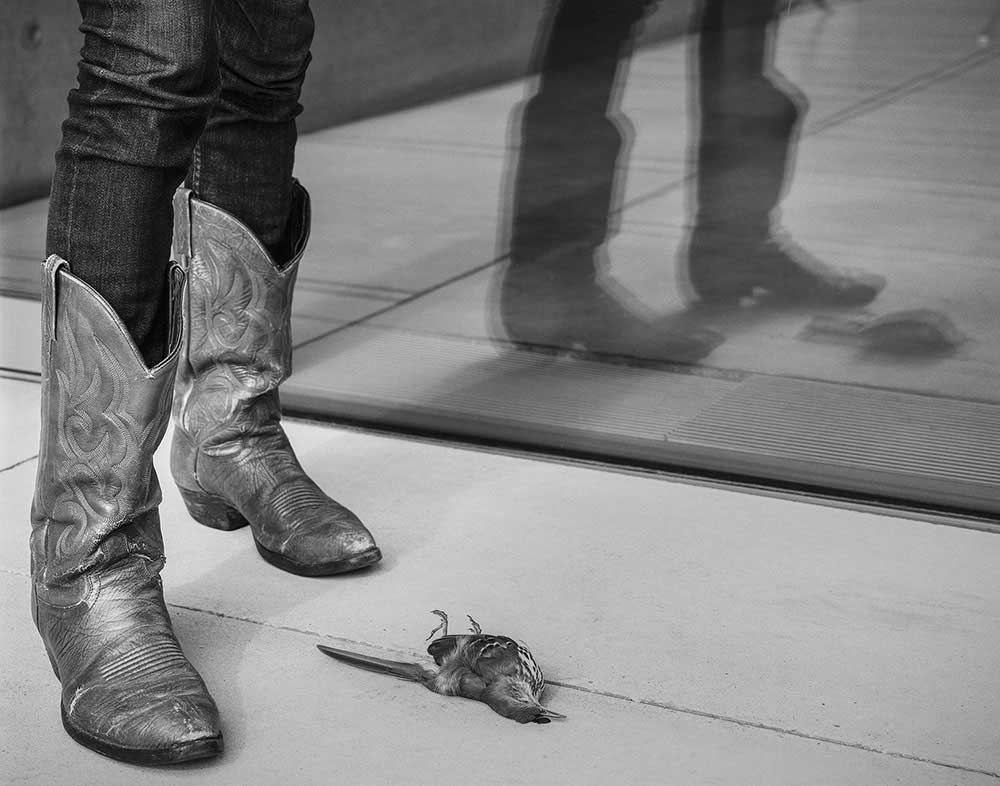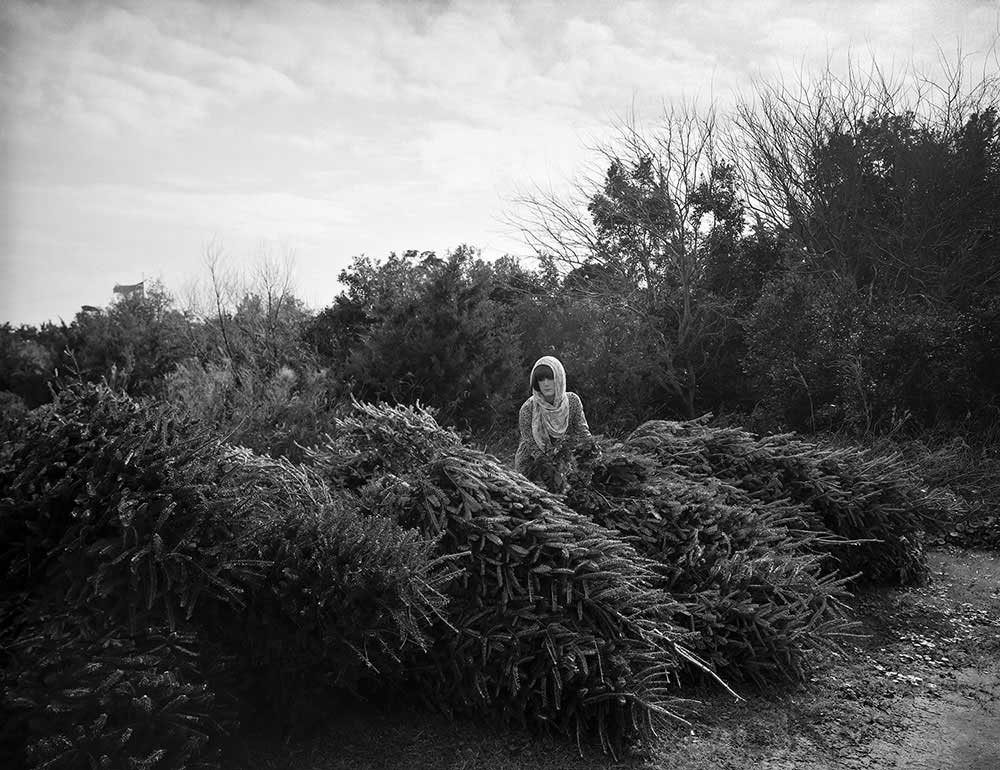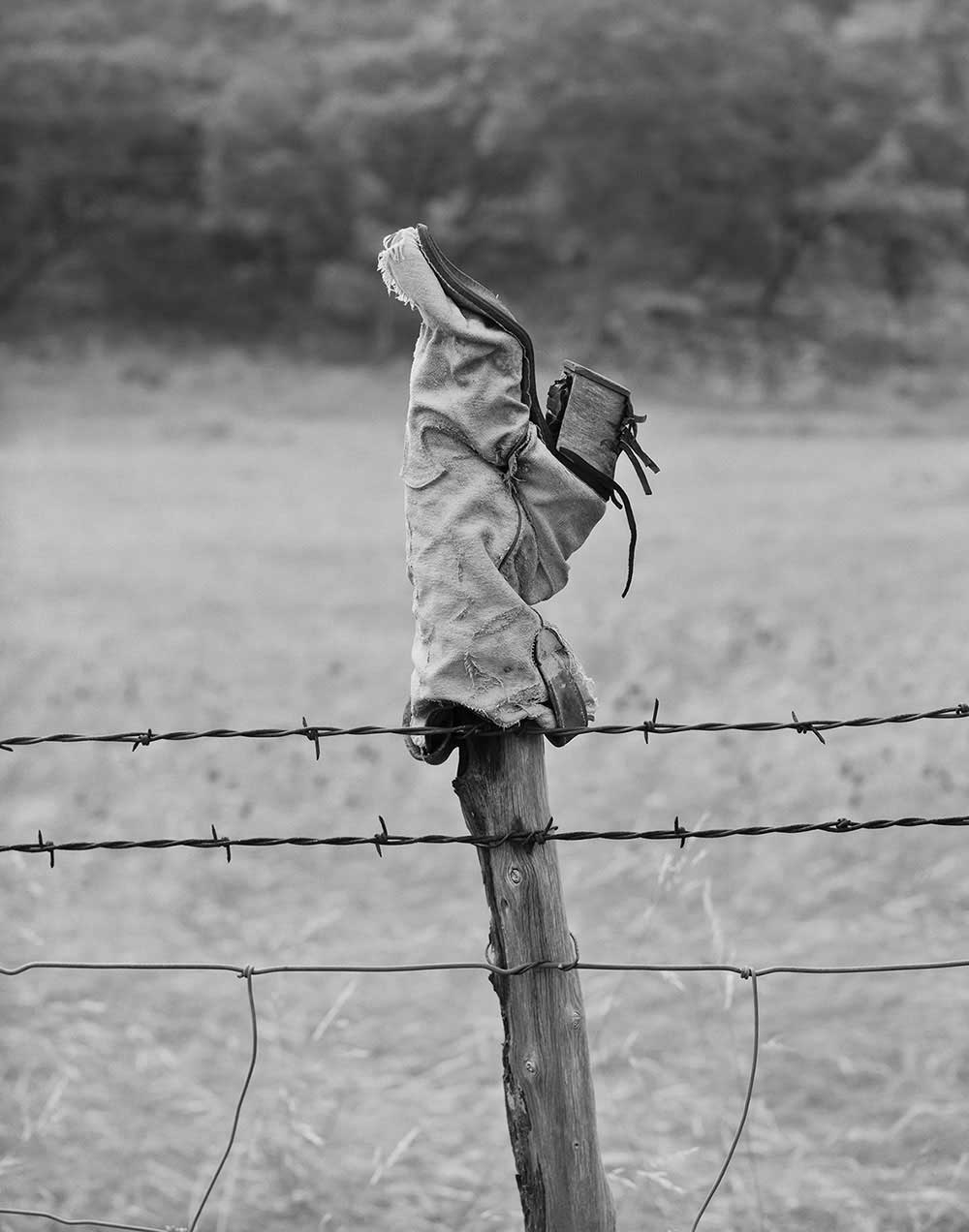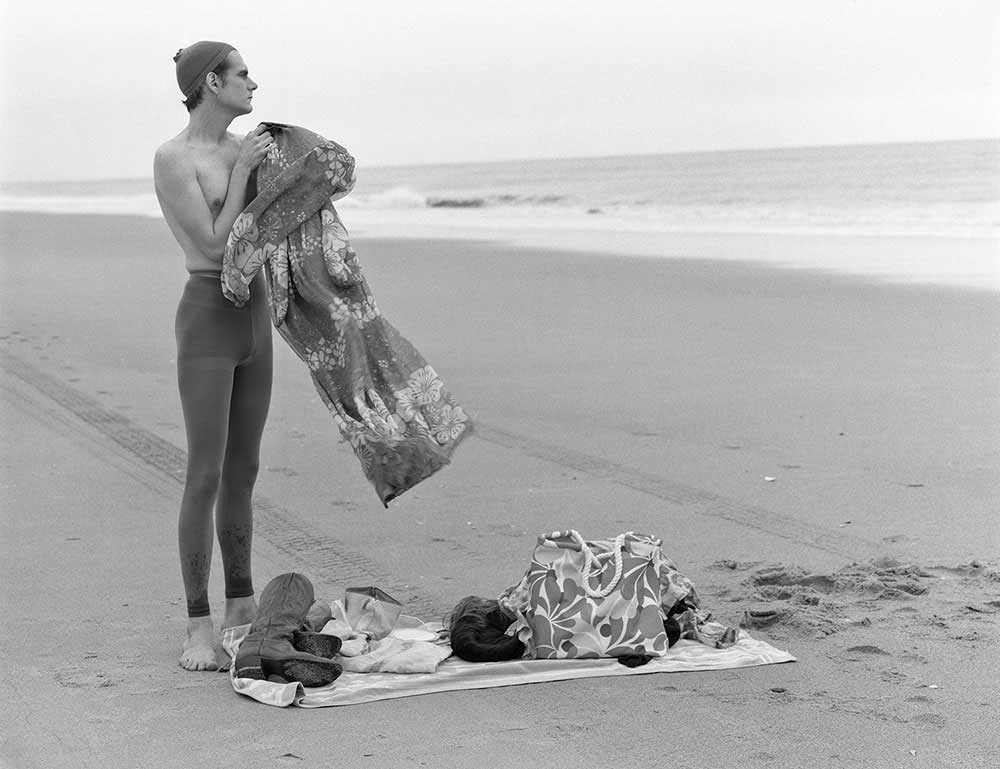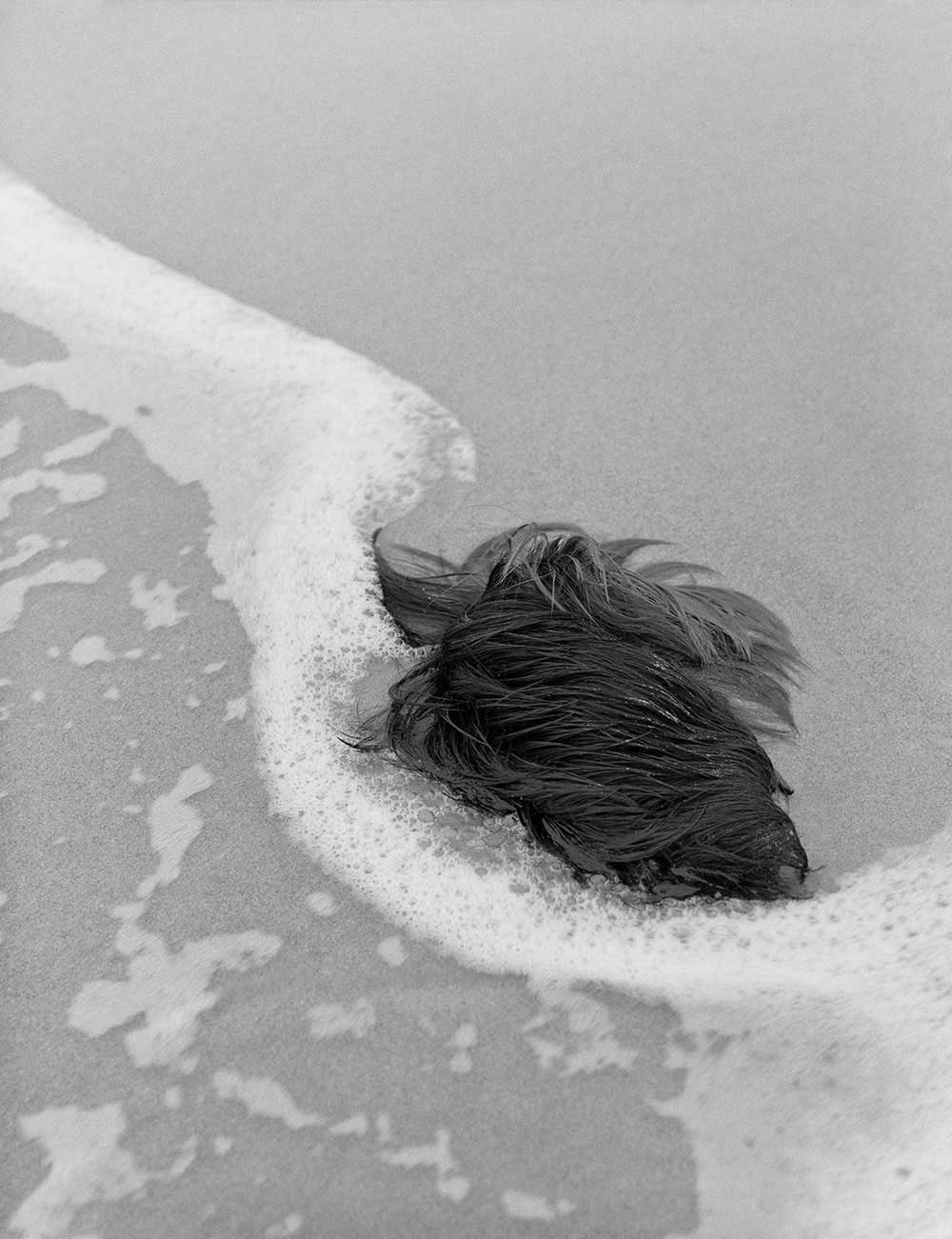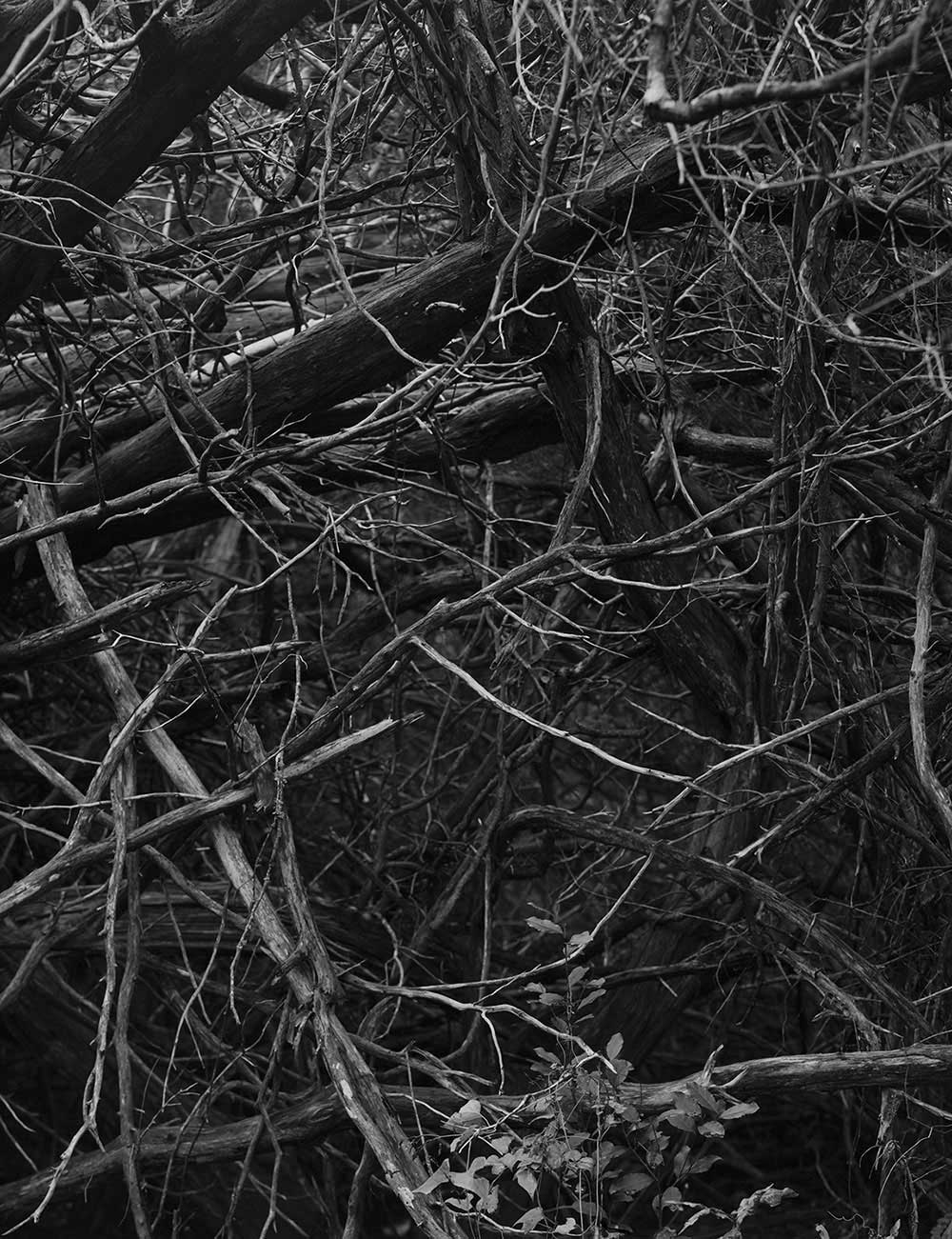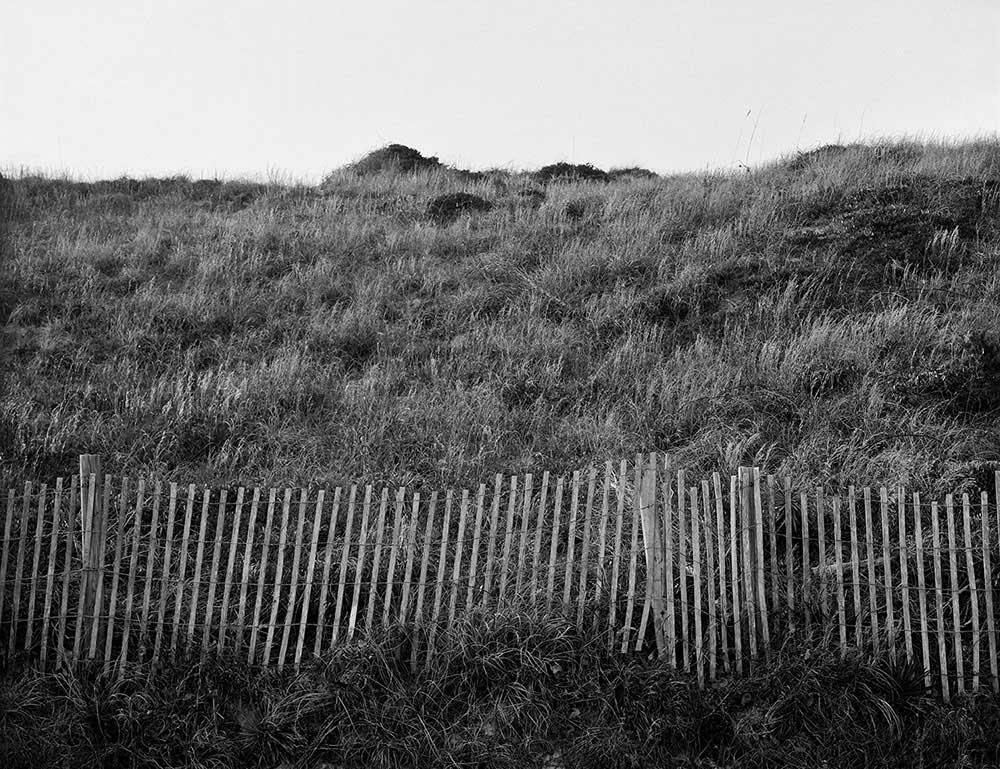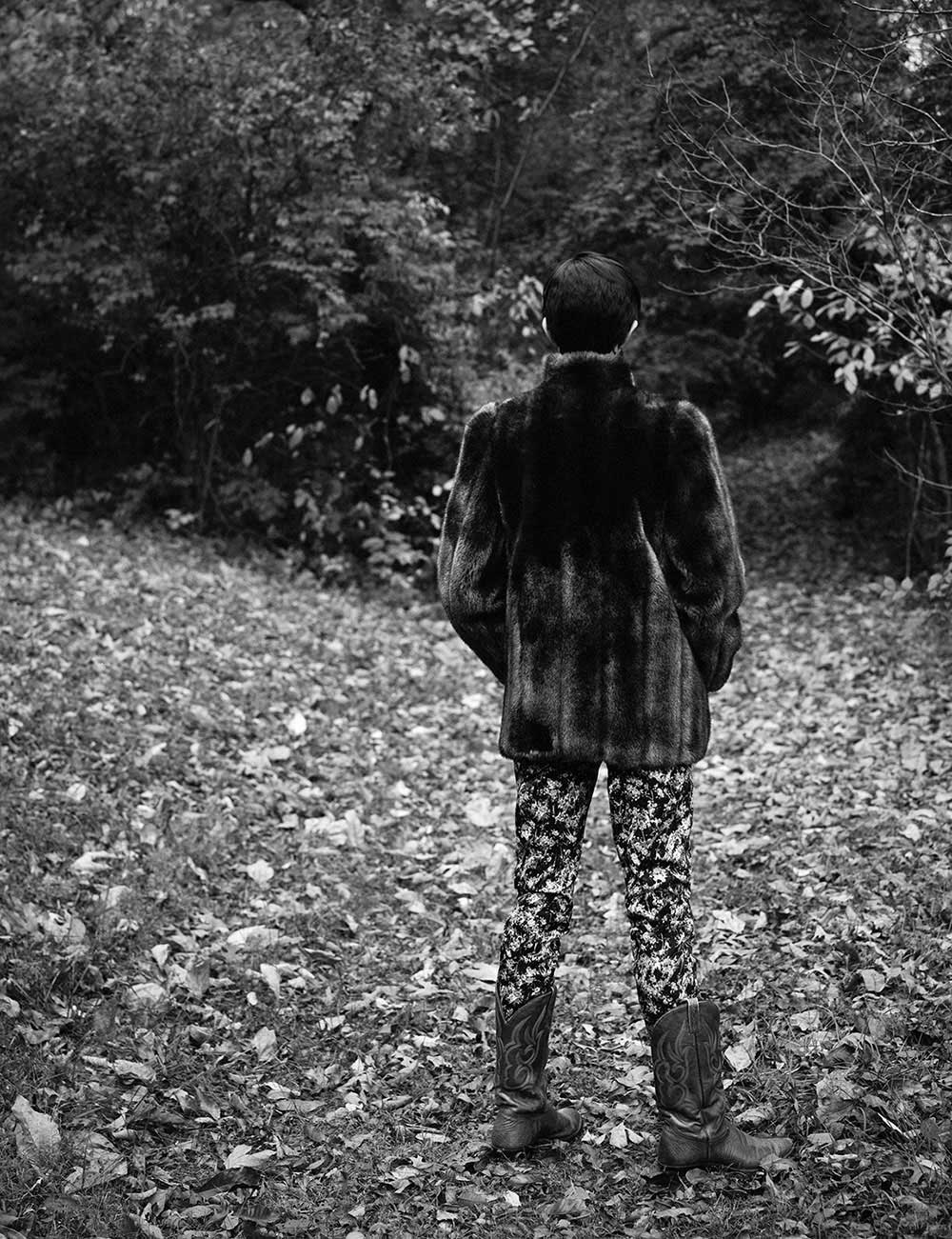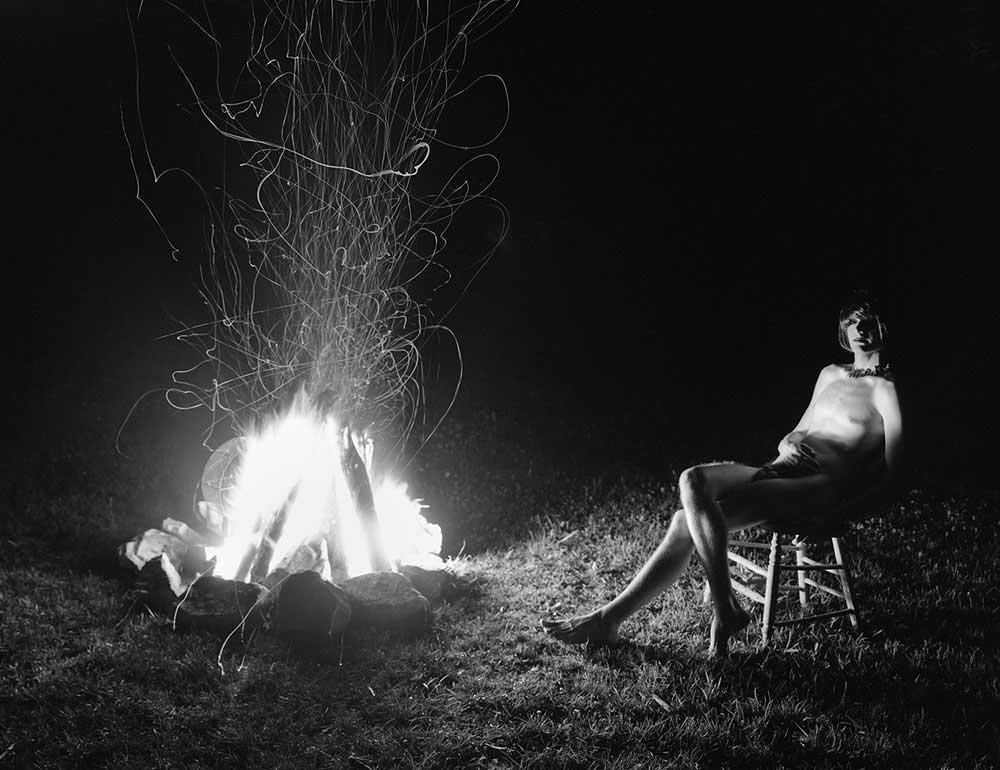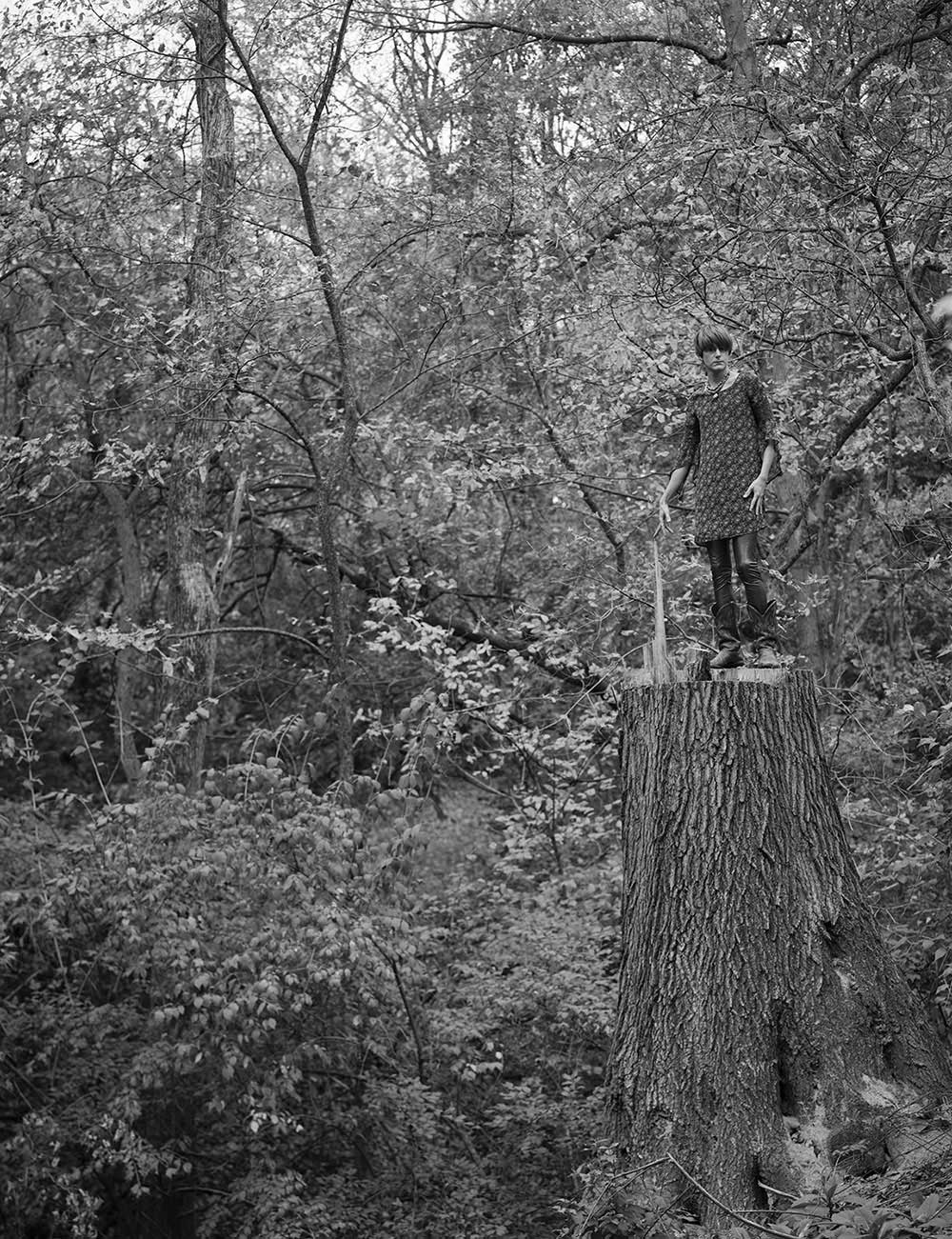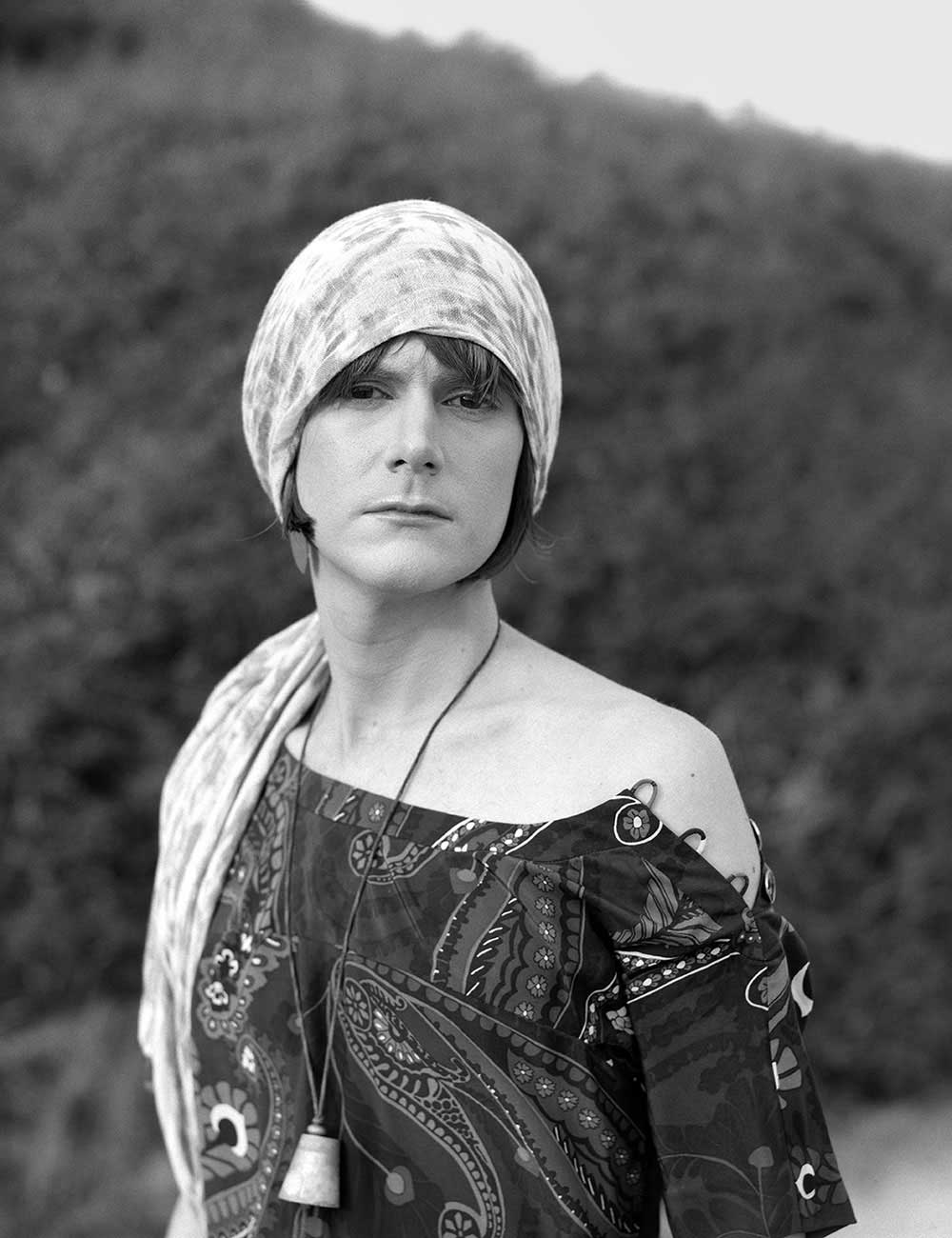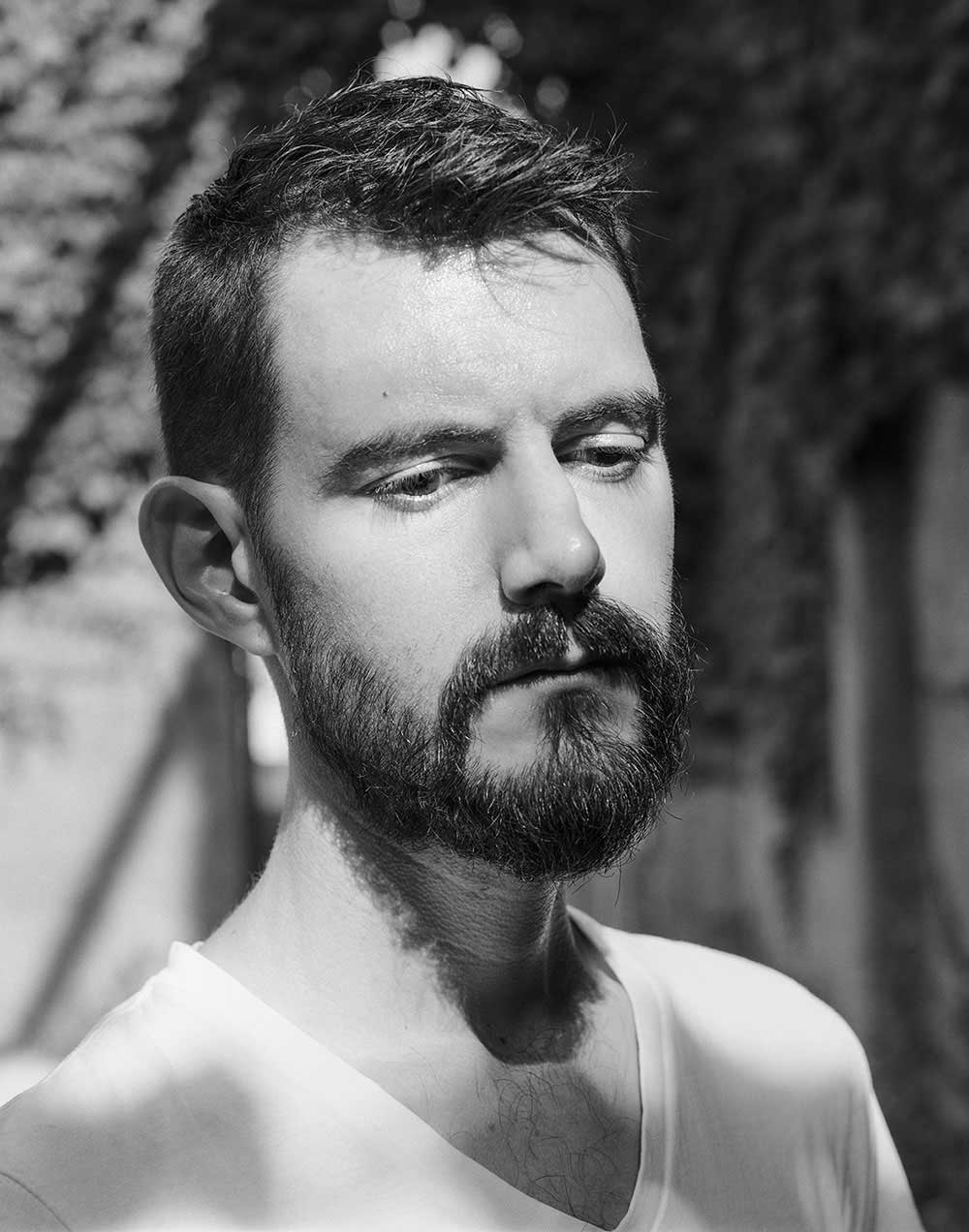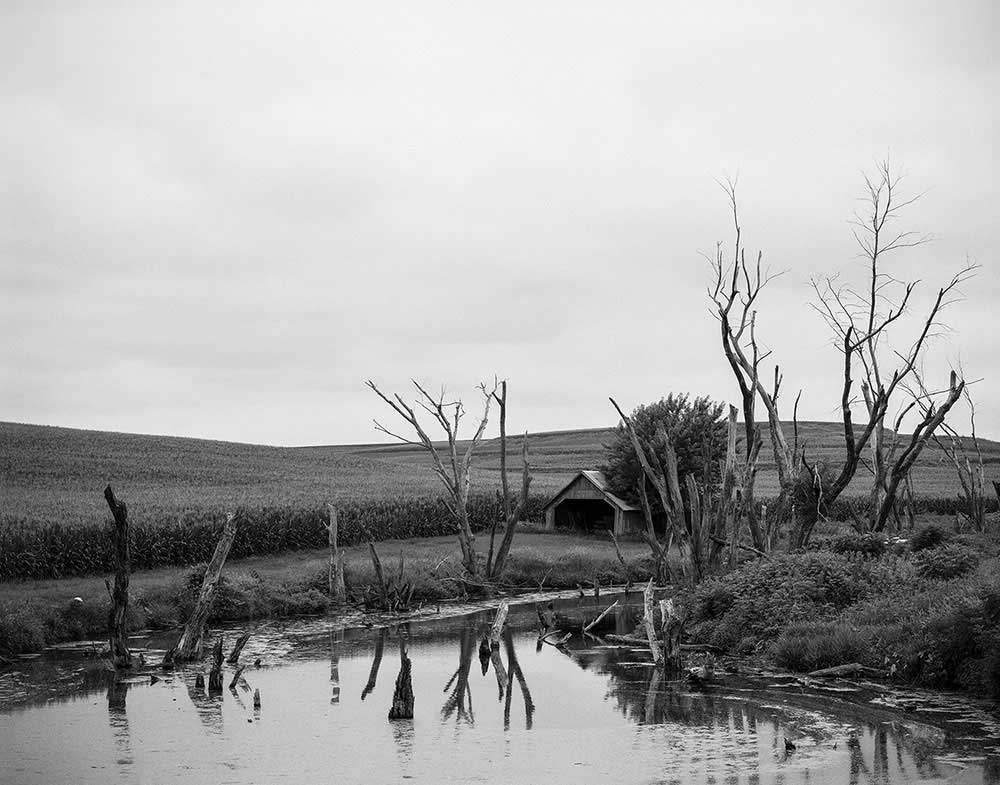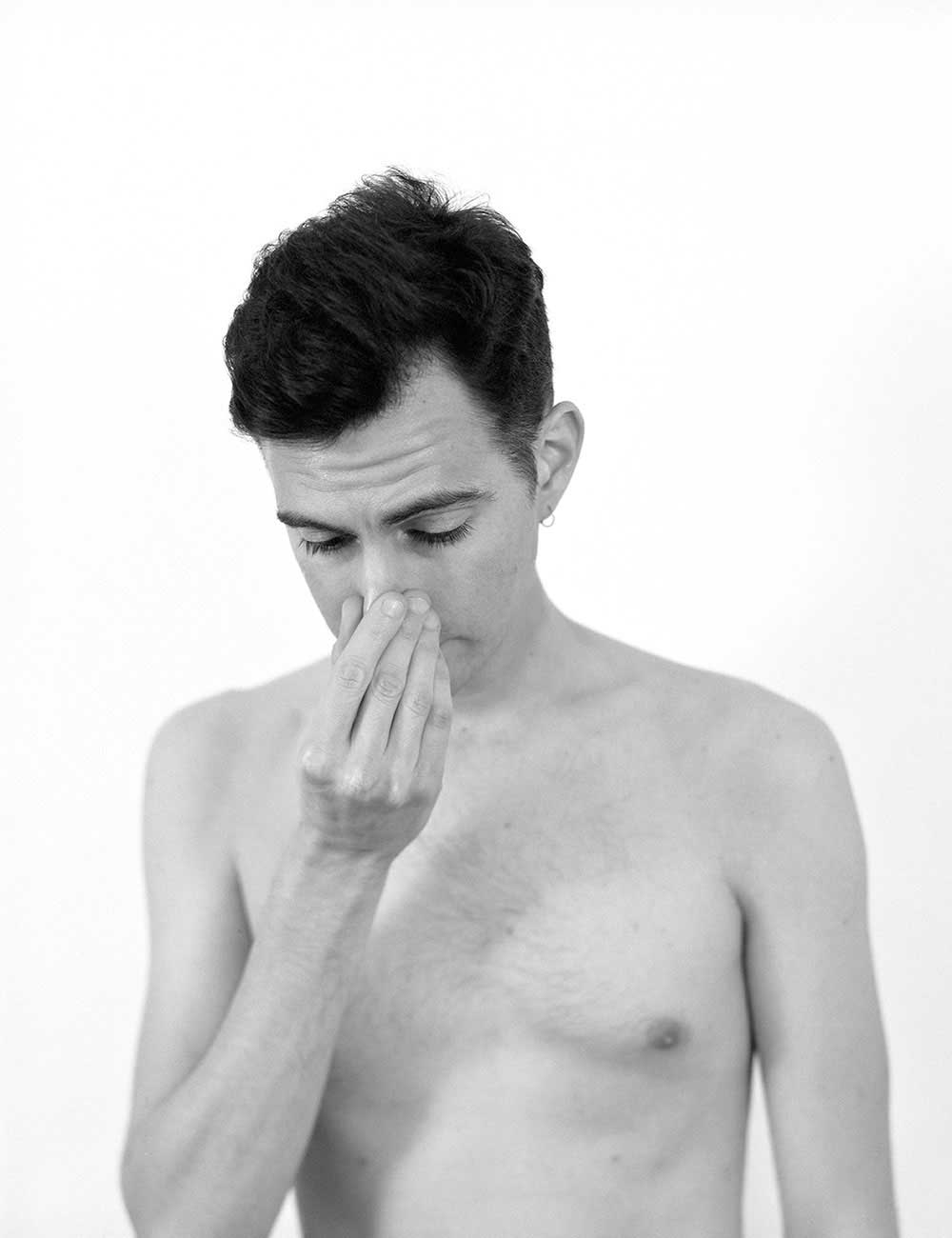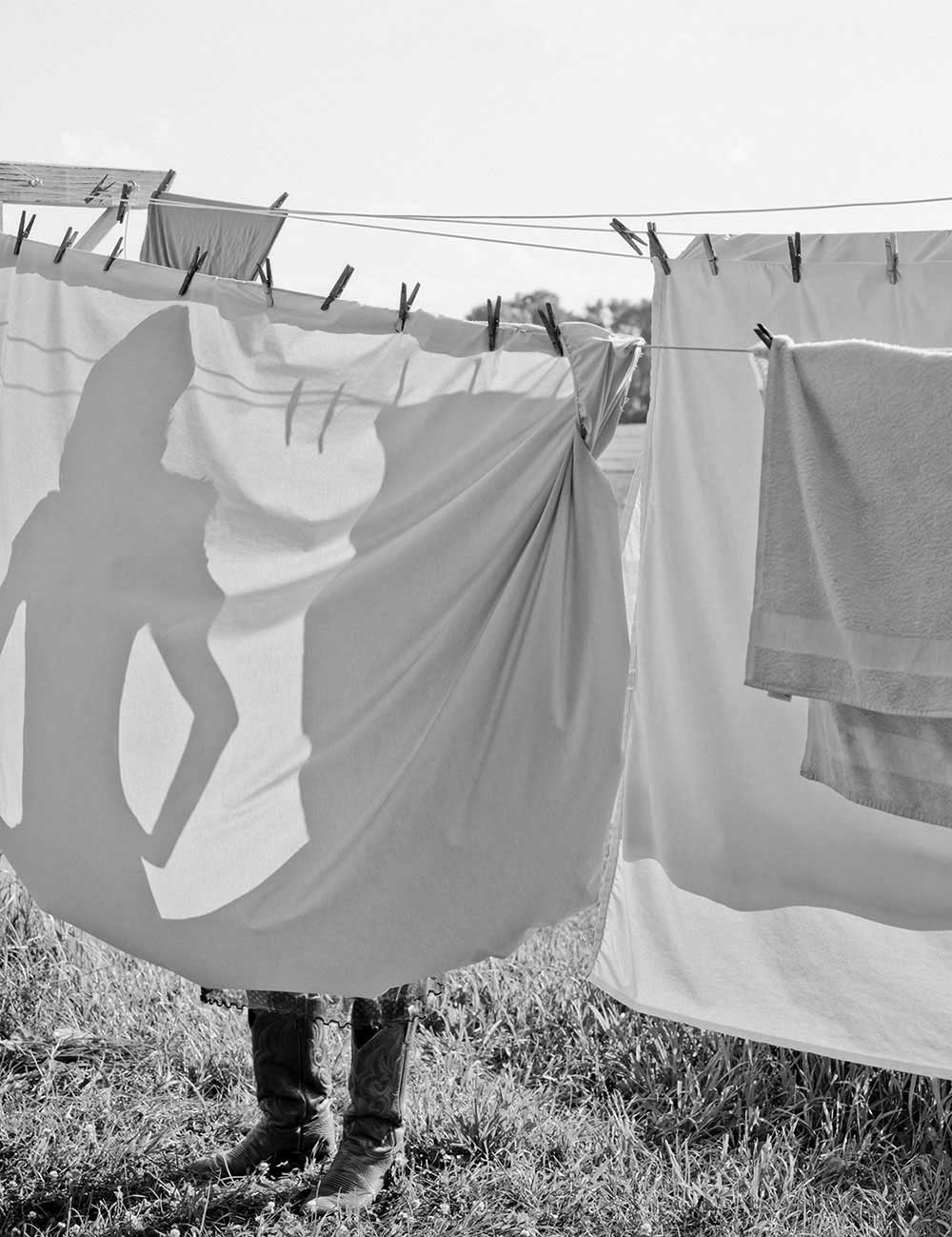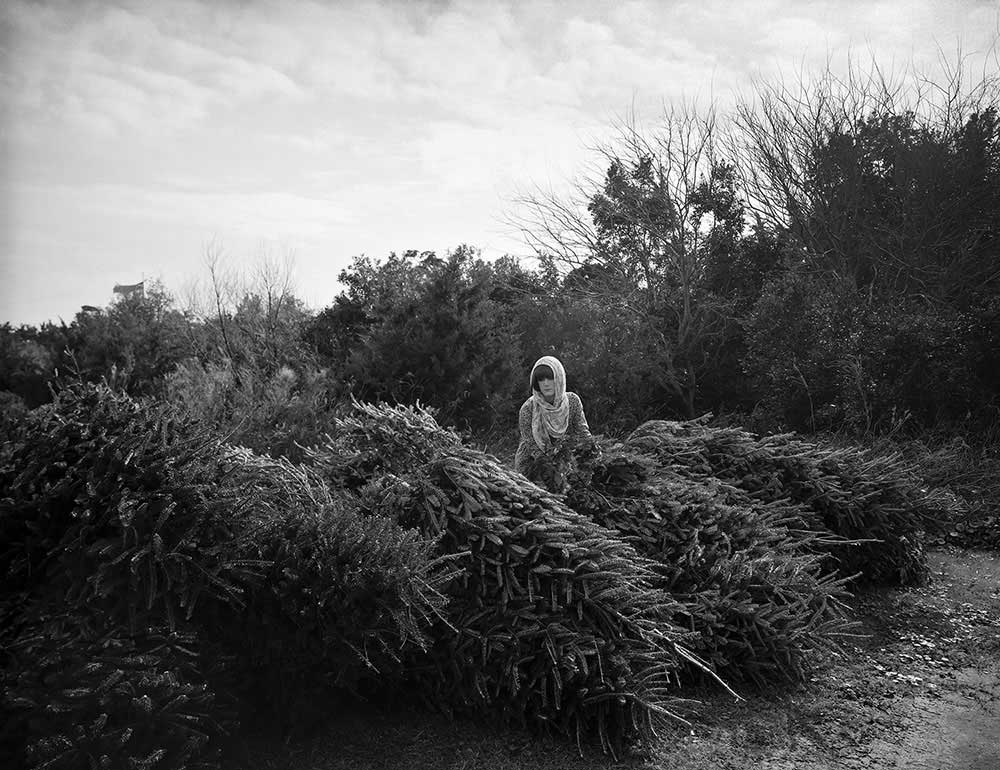Wig Heavier Than a Boot brings together photography and video by David Johnson and poetry by Philip Matthews. As we reveal Petal—a persona as whom Philip writes, and whom David photographs—the project crosses art-making rituals with isolated performances in domestic spaces and pastoral landscapes.
Taken together, the images and poems reveal surprising relationships between character, observer, and author. The photographs provide one record of Petal and Philip’s personalities, blurring art-historical feminine / masculine postures and gestures. The poems provide another which elaborates upon the lived experience of performing or, sometimes, obscuring or protecting the self from being seen. Thus, a continuous exchange between photographer and two subjects in one body reflects the complications of power and gender expression through the history of photography. The practice is one in slowness: preparing a large-format photograph and waiting for Petal to arrive, alternately present within Philip or in elements of the landscape. In this process, David and Philip continually break open and leverage their own biases and desires to create an authentic body of work in collaboration with each other and with Petal.
David scouts locations that correlate to the world of the poems—muck, thicket, water’s edge—while Philip uses elements of drag to become Petal for the camera (and mirror), taking notes that give way to poetry. Subverting the ekphrastic literary tradition in which a poet responds to a visual artwork, Philip’s poems do not correlate one-to-one to Johnson’s photographs nor vice-versa. Both forms are made in the present, and have arcs that can be read independently though they are made fuller by the presence of the other. Both photographs and poems balance narrative with fragmentation and invite multiple interpretations. The photographs capture the distinct or simultaneous presences of two subjects while the poems hybridize their perspectives, enacting a relationship that is surreal, empowering, and unbearable, as the project title suggests. What is constant is a sense of a person wanting to belong to the place that hosts them (farmland in rural Wisconsin, the coast of North Carolina, an art museum in St. Louis, a small church), even or especially when the social norms of that place are felt to ostracize queer people. It is important to acknowledge that while David is a straight man and Philip is queer, both artists feel a fuller sense of self from having known Petal. Three players collaborate in this work, drawing upon their express differences to mutually learn from one another. [Official Website]
David Johnson’s work has settled at the intersection of society, architecture, and the individual. Multiple bodies of work demonstrate ways in which space can affect personality and how individual’s impact environments they occupy, even momentarily.



